小谈设计模式(20)—组合模式
小谈设计模式(20)—组合模式
- 专栏介绍
- 专栏地址
- 专栏介绍
- 组合模式
- 对象类型
- 叶节点
- 组合节点
- 核心思想
- 应用场景
- 1
- 2
- 3
- 结构图
- 结构图分析
- Java语言实现
- 首先,我们需要定义一个抽象的组件类 Component,它包含了组合节点和叶节点的公共操作:
- 然后,我们定义组合节点类 Composite,它实现了 Component 接口,并包含了一个子组件列表:
- 最后,我们定义叶节点类 Leaf,它也实现了 Component 接口,但它没有子节点:
- 现在,我们可以使用组合模式来创建一个树状结构并操作它:
- 运行上述代码,输出结果如下
- 总结
- 优缺点分析
- 优点
- 简化客户端代码
- 增加新的节点类型
- 方便地处理递归结构
- 缺点
- 可能会导致设计过于一般化
- 可能会增加系统的复杂性
专栏介绍
专栏地址
link
专栏介绍
主要对目前市面上常见的23种设计模式进行逐一分析和总结,希望有兴趣的小伙伴们可以看一下,会持续更新的。希望各位可以监督我,我们一起学习进步,加油,各位。
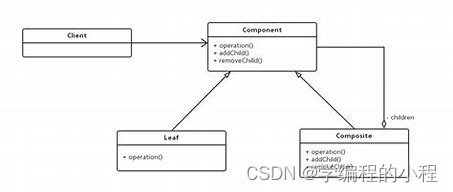
组合模式
组合模式是一种结构型设计模式,它允许将对象组合成树状结构以表示“部分-整体”的层次结构。组合模式使得客户端可以统一地处理单个对象和组合对象,无需区分它们的区别。
对象类型
叶节点(Leaf)和组合节点(Composite)
叶节点
它表示树的最底层的对象,它们没有子节点。
组合节点
它表示树的分支节点,它可以包含其他的组合节点和叶节点。
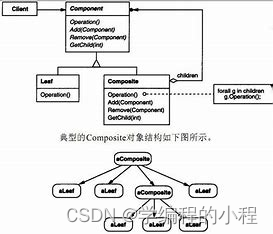
核心思想
使用一个抽象类或接口来定义组合节点和叶节点的公共操作。这样,客户端可以通过调用这些公共操作来处理组合节点和叶节点,而无需知道具体的节点类型。
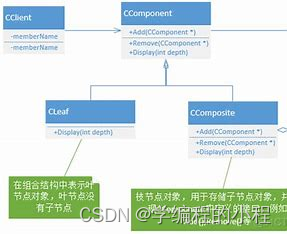
应用场景
1
需要表示对象的部分-整体层次结构,并且希望客户端能够一致地处理单个对象和组合对象的情况。
2
需要对树状结构进行递归操作,例如遍历树、查找特定节点等。
3
需要动态地增加或删除树的节点。
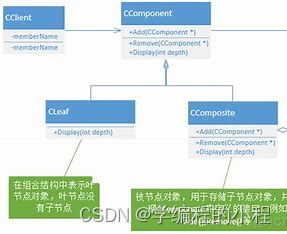
结构图
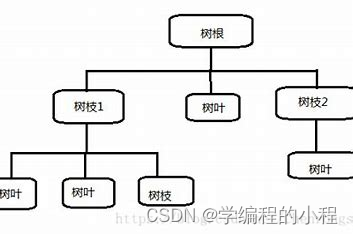
结构图分析
在上面的结构图中,Component 是组合模式的抽象类或接口,定义了组合节点和叶节点共有的操作。Composite 是组合节点的具体实现,它可以包含其他的组合节点和叶节点。Leaf 是叶节点的具体实现。
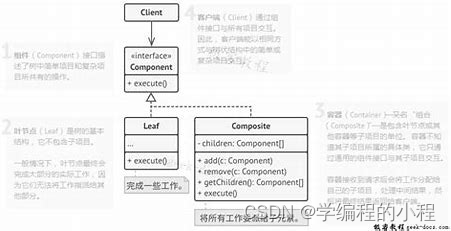
Java语言实现
首先,我们需要定义一个抽象的组件类 Component,它包含了组合节点和叶节点的公共操作:
public abstract class Component {protected String name;public Component(String name) {this.name = name;}public abstract void operation();public abstract void add(Component component);public abstract void remove(Component component);public abstract Component getChild(int index);
}
然后,我们定义组合节点类 Composite,它实现了 Component 接口,并包含了一个子组件列表:
import java.util.ArrayList;
import java.util.List;public class Composite extends Component {private List<Component> children;public Composite(String name) {super(name);children = new ArrayList<>();}@Overridepublic void operation() {System.out.println("Composite " + name + " operation.");for (Component component : children) {component.operation();}}@Overridepublic void add(Component component) {children.add(component);}@Overridepublic void remove(Component component) {children.remove(component);}@Overridepublic Component getChild(int index) {return children.get(index);}
}
最后,我们定义叶节点类 Leaf,它也实现了 Component 接口,但它没有子节点:
public class Leaf extends Component {public Leaf(String name) {super(name);}@Overridepublic void operation() {System.out.println("Leaf " + name + " operation.");}@Overridepublic void add(Component component) {// 叶节点不支持添加操作}@Overridepublic void remove(Component component) {// 叶节点不支持删除操作}@Overridepublic Component getChild(int index) {// 叶节点没有子节点return null;}
}
现在,我们可以使用组合模式来创建一个树状结构并操作它:
public class Main {public static void main(String[] args) {// 创建树状结构Composite root = new Composite("root");Composite branch1 = new Composite("branch1");Composite branch2 = new Composite("branch2");Leaf leaf1 = new Leaf("leaf1");Leaf leaf2 = new Leaf("leaf2");Leaf leaf3 = new Leaf("leaf3");root.add(branch1);root.add(branch2);branch1.add(leaf1);branch2.add(leaf2);branch2.add(leaf3);// 调用操作方法root.operation();}
}
运行上述代码,输出结果如下
Composite root operation.
Composite branch1 operation.
Leaf leaf1 operation.
Composite branch2 operation.
Leaf leaf2 operation.
Leaf leaf3 operation.
总结
以上就是使用Java语言实现组合模式的示例代码。通过组合模式,我们可以方便地处理树状结构,并且客户端可以一致地处理单个对象和组合对象。
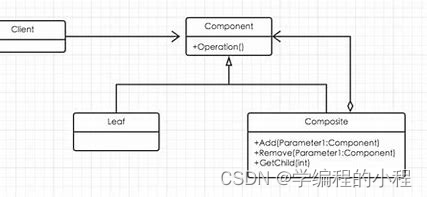
优缺点分析
优点
简化客户端代码
客户端可以一致地处理单个对象和组合对象,无需区分它们的差异。
增加新的节点类型
通过继承 Component 类,可以方便地增加新的节点类型,而无需修改现有的代码。
方便地处理递归结构
组合模式适用于处理递归结构,例如树状结构。
缺点
可能会导致设计过于一般化
组合模式将叶节点和组合节点都抽象为 Component 类,可能会导致设计过于一般化,不适合特定的场景。
可能会增加系统的复杂性
组合模式引入了组合节点和叶节点的层次结构,可能会增加系统的复杂性。
